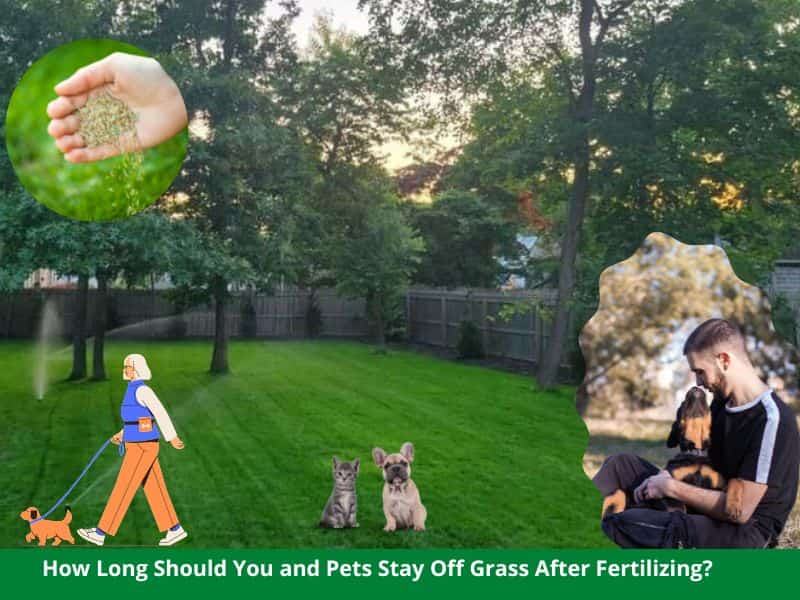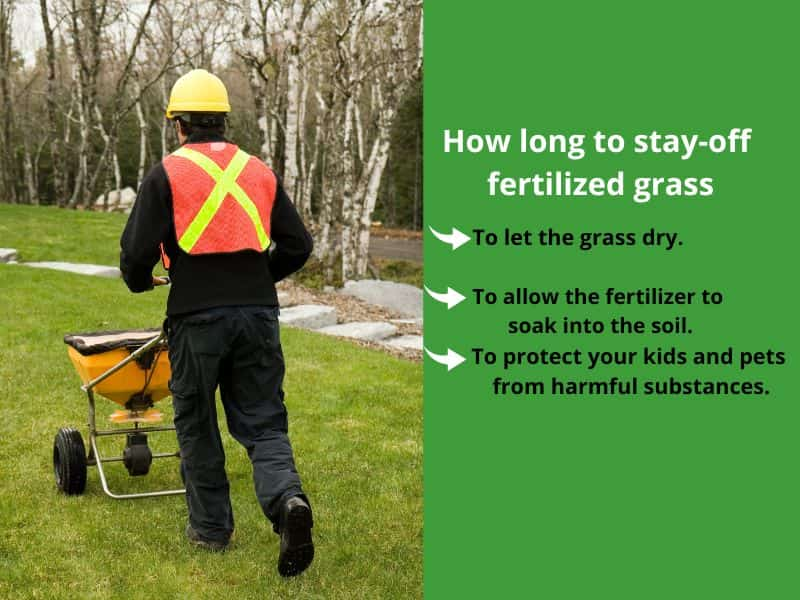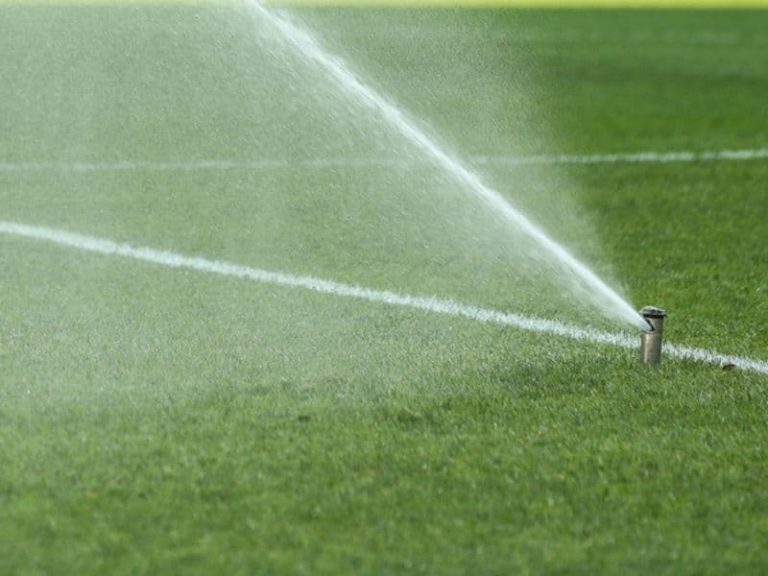How Long Should You Stay Off Grass After Fertilizing?
Lawn fertilization is an essential care practice that nourishes grass and helps it stay lush green. Applying fertilizers correctly and caring for the lawn after the application determines how much your grass benefits. But how long should I keep off the grass after fertilization?
Ideally, pets, kids, and adults should stay off the grass for about 24 to 48 hours from the time of fertilizer application. Restricting people and pets from the lawn is an immediate task to consider if you want the grass to benefit from the nutrients out of your fertilizer application. In addition, both liquid or granule fertilizers contain chemicals that may be toxic to both humans and pets

Here, we’ll look into why keeping off the grass for a while after applying fertilizers is essential and how to keep kids and pets safe after using fertilizers.
Can you walk on grass after fertilizing?
Keep off grass immediately for 24-48 hours after fertilizing, depending on the type and manufacturer’s instructions. Walking on the grass too soon prevents the fertilizer from soaking well into the soil to reach the grassroots for absorption. Furthermore, stepping immediately on the lawn doesn’t give the grass blades enough time to dry.
Lawn fertilizers exist as granules or liquids. While both types need specific application methods, they require time to soak into the soil before getting exposed to foot traffic. When you give fertilizers adequate time to soak in the ground, the grassroots can take them in for use.
However, walking on the lawn immediately after applying fertilizer prevents them from soaking correctly in the soil. Thus, the grass doesn’t benefit from the application.
Immediate walking on the lawn doesn’t allow the fertilizer enough time to evaporate and dry. Instead, the granules or liquid droplets remain on the grass blades. These granules or droplets stick on people’s feet and pets’ bodies when they contact them, carrying them away. This leads to a wastage of resources since your grass gets a small percentage. Besides, fertilizer residues sticking to people’s clothes or bodies might contaminate foods or drinks when they accidentally fall on them, leading to poisoning risks.
How long to stay off fertilized grass
Restrict movement into the lawn for about 24 to 48 hours from the time of fertilizer application, depending on weather conditions, the type of fertilizer applied, and the recommended manufacturer’s instructions.
Kids, pets, and adults shouldn’t use the yard before this period elapses. You may want to take your pets far from home or keep them indoors to avoid coming to the lawn.

Staying off the grass for both humans and pets is vital for the following three reasons:
To let the grass dry
Keep off the grass for a day or two after application to give the grass blades enough time to dry, and the excess droplets evaporate into the air.
Letting the grass dry before stepping on them prevents the fertilizer granules from sticking on the blades, leading to wastage due to foot traffic. But when is the best time to fertilize before or after rain?
To allow the fertilizer to soak into the soil
Granular and liquid fertilizers need time to soak into the soil, so the grassroots take them in. This is especially true for slow-release fertilizers, which take longer to diffuse and provide nutrients for the grass.
Stay off the lawn for about two days after applying to soak the fertilizer into the soil properly for absorption.
To protect your kids and pets from harmful substances
Some lawn fertilizers contain weed killers and insecticides. These substances have chemical compounds such as glyphosate, which can be detrimental when it contacts the skin or gets ingested.
Kids and pets frequent the lawn and are most likely to touch or eat fertilizer residues they may find on grass blades. Therefore, restricting their movement into the yard after spreading fertilizers is vital to let any toxic residue soak into the soil or dry from the grass blades.
The lawn thus remains safe for use, and you don’t have to worry about poisoning from fertilizers.
How long after fertilizing the lawn is it safe for pets?
Besides kids, pets are also ardent lawn users. They usually play with kids, run on the lawn, or use it as their bathroom. Others, such as dogs, eat the grass.
Chemical fertilizers sometimes contain compounds that might be dangerous to pets when they ingest or rub their fur on them. Such additives include insecticides and herbicides or high amounts of nitrate or nitrite. Thus, keep your pets away from the lawn for about 24 hours to 48 hours from the time of fertilizer application.
Restricting pets’ movement on the lawn allows the fertilizer to soak into the soil and the grass blades to dry. Thus, your pet won’t find any fertilizer residues to eat or touch. Otherwise, you will need medical help from a pet vet.
Is lawn fertilizer toxic?
Lawn fertilizers are suitable for your grass but can sometimes be toxic to pets, kids, or adults when it contacts them or when they ingest them. Here’s how:
Toxic lawn fertilizers are those not labeled pet or kid-friendly. They might contain insecticides or weedkillers. Some weedkillers, for example, Roundup, have glyphosate as the main ingredient. While glyphosate kills lawn weeds, it’s harmful when kids or pets ingest them.
Meanwhile, other fertilizers such as ammonium sulfate, ammonium nitrate, and ammonium phosphate contain high levels of nitrates and nitrites, which might be poisonous when kids or pets eat them.
Fertilizers with high nitrate and nitrite content are also toxic when they contact your kids’ skin or pet’s fur. Contact with skin or hair causes irritation and corrosion.
A pet or kid who has eaten fertilizer residues will show signs and symptoms such as vomiting, nausea, shortness of breath, dizziness, itchy skin, burning sensation in the throat, eyes, or nose, and stomach upset.
If your kid or pet accidentally eats or touches toxic lawn fertilizers, start rubbing off the product from their mouth using wet clothes. Wash their hands to remove residues and give them plenty of water.
Caution: Don’t induce forced vomiting to remove the swallowed products. Consult a doctor or pet vet for further instructions and treatment.
References
- University of Florida: Pestscaping.
- Oregon State University: A Guide to Fertilizers.


